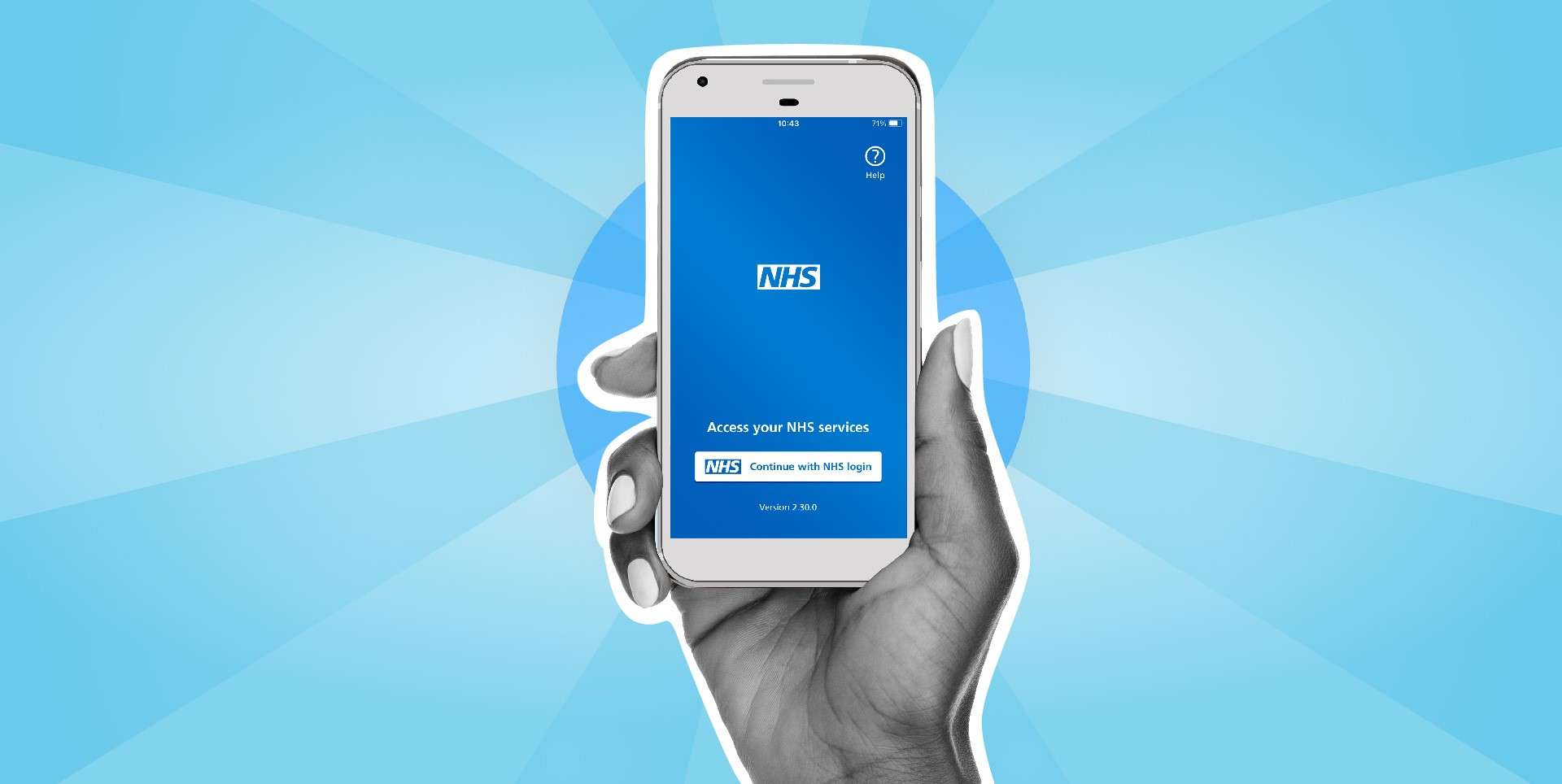The current crisis has placed an unexpected – and perhaps unwelcome – weight of responsibility on service designers. The NHS website’s lead designer Dean Vipond discusses how to cope with the fear and stay focused on users and outcomes
Credit: Crown Copyright/Open Government Licence v3.0
Dean Vipond (pictured below right) is lead designer for NHS.UK. In this piece, he writes about the experiences of the last few months, and how the service design community has responded to the coronavirus crisis. He also offers words of advice for how to cope with the added gravity of responding to a major global health crisis, and the importance of staying focused on design principles.
He is on Twitter @DeanVipond.
It’s a strange time to be working in service design, interaction design or product development.
If you’re working on a public service or in health and care or for charities, you’re probably having to work faster and think more clearly than you’ve ever had to before. This stuff is life and death, and everything needs delivering yesterday.
I’ve had a number of conversations recently with people working on extremely important services. It’s easy for the pressure to build, and the fear that a mistake you make now might have a butterfly effect on people’s lives. You might feel like you’re not cut out for such momentous decision-making. You’re just a designer or a developer, a product manager, or whatever. It’s probably not what most of us expected to be doing when we chose – or fell into – this game.
So here are just a few tips to bear in mind over the coming weeks and months.
Don’t compromise your approach
The success of services designed and built at speed is dependent on the fact that they have a user-centred foundation. Understand the problem and agree it with your team. Make sure stakeholders understand this too.
Do user research. However little time you have, there is still time to get insights from people, whether it’s a response to a quick prototype or some opinions from potential users on the intent of a project. You can still take the steps to ensure your decision-making is informed by research. This article on service design in a crisis by (former UK government director of design) Lou Downe should be shared with all of your colleagues.
Make it responsive
Don’t make assumptions about the devices your users will be using. Might your thing be used by healthcare staff? If so, they’re probably all on desktop machines, so you don’t need to design mobile-first, right? You might even have some stats about that.
Even then, you can’t make guesses about screen resolutions or how staff need to use the service in their day-to-day. One my colleagues recently told me he’s observed healthcare staff often having two screens open at once (on half-width), as they need information from two different systems. Some staff might have poor eyesight and need to increase the font size. Making your thing responsive covers you for things you might have never even considered.
This isn’t the time to get precious about your favourite design and development tools. Your service might have to be accessed on old devices in hospitals with outdated tech or unsupported operating systems.
Don’t take chances with the tech
This isn’t the time to get precious about your favourite design and development tools. Use progressive enhancement as your philosophy. Your service might have to be accessed on old devices in hospitals with outdated tech or unsupported operating systems. HTML+CSS is your best bet to ensure that the service can be accessed in unlikely scenarios you’ve never even considered. Do you want to take that risk at a time like this? Nope, me neither.
Save the React squabbles for another time. Make it accessible and robust from day one. Use the tools and components already at your disposal and rely on the work others have done to make them usable by everyone – to get you further quicker.
Don’t let the fear grip you
The coronavirus situation is unprecedented for many of us. We’ve not had to respond in this way before, and that brings a weight with it. But you can’t let that eat you up or you will become paralysed. If you are following good practice, if you are sharing your work and thinking with the right people (colleagues, policy people, clinicians), and you are doing user research, then you are doing your job right.

The stakes may feel higher, but you are still using user centred design to affect a desired outcome. Whether that’s presenting information to healthcare staff to help them make decisions or guiding poorly people to the right type of care and advice, these things should not be scary – if you are following good practice.
‘That’s easy for you to say…’
I don’t mean to make it sound like any of this is easy; it most certainly isn’t, and I speak from experience on that. It is very often difficult to untangle our work from the unprecedented scale of change in our personal lives that we must also adjust to.
I mentioned this in a Twitter thread recently about how weird everything is now. We’re all terrified of a whole host of different things outside of work right now, but the potential life-or-death implications of our design work should not be one of those.
But if you are finding it scary and if it is weighing you down, talk to someone. Now is not the time to bury things and hope the fear goes away.

This article is part of PublicTechnology’s How to Design a Government Service project, in association with BJSS. This specially created content week will feature a range of exclusive interview, feature, and analysis content dedicated to the art of delivering digital services for citizens and public sector professionals – from the earliest stages of discovery, right through to maintaining live services in use by millions of people. Click here to access all the content.



